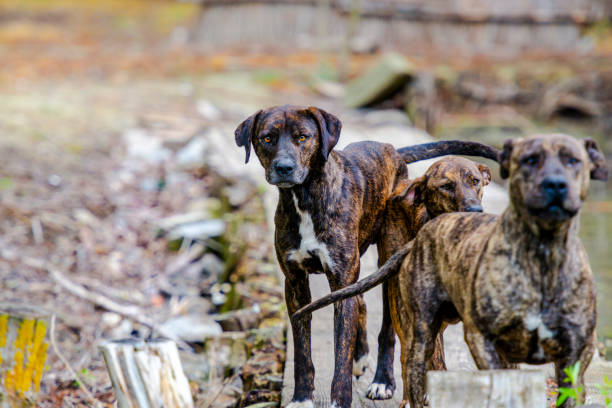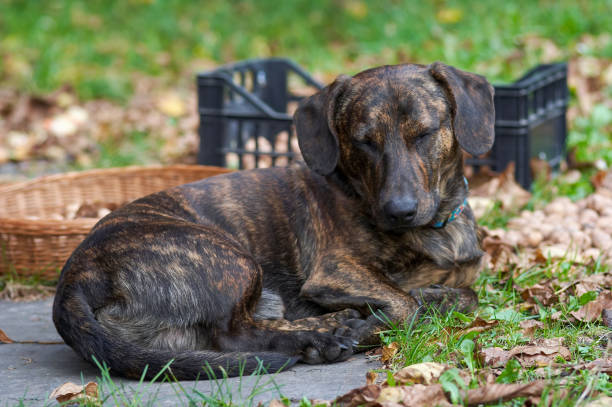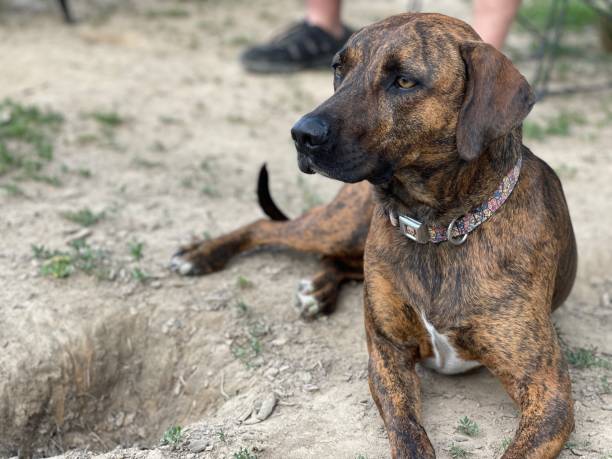Plott Hound

Breed History:
The Plott Hound is the state dog of North Carolina and one of the few coonhound breeds not rooted in foxhounds. Its history begins in the mid-1700s, when Johannes Plott, a German immigrant, brought his family’s Hanoverian Schweisshunds (a type of large game-tracking hound) to the American colonies.
Bred in the mountains of North Carolina, the dogs were refined over generations to create a fearless, cold-nosed scent hound capable of tracking and treeing large game like bears, boars, and raccoons. The breed was carefully linebred within the Plott family for generations, eventually becoming known for its tenacity, endurance, and distinctive brindle coat.
The Plott Hound was officially recognised by the AKC in 2006.
|
Gender |
Height |
Weight |
|
Male |
50-71 cm |
23-32 kg |
|
Female |
50-66 cm |
18-27 kg |
Size: Medium to Large
Life Expectancy: 12–14 years

Breed Appearance:
The Plott Hound is a muscular, streamlined dog with a short, dense coat that typically comes in brindle patterns (black, brown, tan, or grey). Solid black is also accepted.
It has drop ears, a long, tapering tail, and an expression that conveys alertness and intensity. The breed’s build combines strength and agility, reflecting its working heritage.
Breed Type – Scent Hound:
Primarily a big game tracker and treeing hound, the Plott is tenacious and determined in the field. It has a strong prey drive, an exceptional nose, and a loud, ringing voice used for communication during hunts.
At home, the Plott is loyal, brave, and even-tempered, often forming deep bonds with family members and showing protective instincts.

Training:
The Plott Hound is intelligent and eager to work, but it can also be independent and strong-willed. Consistent, reward-based training from a young age helps harness its energy and drive.
Socialisation is essential to ensure comfort around strangers and other animals. They respond well to structured environments and mental stimulation.
Health & Care:
Generally healthy, but some concerns include:
-
Hip dysplasia
-
Bloating (gastric torsion)
-
Ear infections (due to floppy ears)
-
Skin issues (from outdoor exposure)
Routine checkups, a balanced diet, and ear cleaning are important. Maintaining a lean weight helps prevent joint issues.

Living Conditions:
The Plott is not ideal for apartment living. It does best in homes with yards or access to rural land, where it can safely roam or be exercised regularly. This breed needs space, activity, and a purpose.
It can adapt to family life but may be reserved with strangers. Proper fencing is important—it's tracking instincts can lead it to wander off if a scent is caught.
Exercise:
As a working hound, the Plott requires intensive daily exercise. This includes:
-
Long walks, hikes, or runs
-
Scent games or tracking work
-
Off-leash time in secure areas
-
Agility or structured play sessions
A bored Plott may become destructive, vocal, or restless.
Grooming:
Low grooming needs:
-
Weekly brushing to remove dirt and loose hair
-
Occasional baths when dirty
-
Clean ears regularly to prevent infections
-
Maintain teeth and nail hygiene
The short coat is weather-resistant and sheds moderately.

Advantages:
-
Excellent hunting and tracking skills
-
Loyal and protective toward family
-
Athletic and versatile outdoors
-
Low grooming maintenance
-
Tough, hardy, and resilient in harsh conditions
-
Deep-rooted American heritage and history
Disadvantages:
-
High exercise needs—can become destructive if bored
-
Not suited for apartment life or inactive owners
-
May be aloof or wary of strangers
-
Strong prey drive—may chase smaller animals
-
Needs firm, consistent training
-
Can be vocal, especially when excited or stimulated

